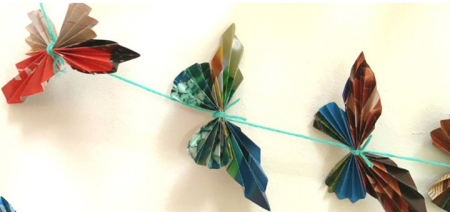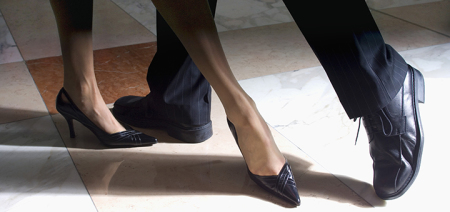Don’t Let The First Ice Become The Last
Published:
January 7th, 2016
By:
Josh Sheldon
The first hard freeze of the winter is on and ice fishermen and women are chomping at the bit to get out. I say, “Easy horse, it’s safer in the barn.”
I can’t remember the last time ice came on so late. Most had been fishing for two weeks by this point, years in the past. We are finally beginning to get some good ice building weather, but it’s not time to break out the auger yet. Now is the time to organize gear, repair and spool rods and reels, charge up and test electronics, work on new ice projects, and finally, pull out the augers and check and replace their blades if needed. This should keep you busy for a week or so until the ice is finally safe to be on. Some say there is no such thing as safe ice. I have to agree if you are speaking in terms of an entire body of frozen water, but when speaking of specific spots on a lake or pond, some can be considered safe. What’s the secret to knowing if ice is safe and what do you do if it turns out the ice wasn’t?
I’m so ready to get on the ice, but a bit of common sense and experience say not yet. Many of us that ice fish, deer hunt also. So we don’t get out until after Christmas most years. This means we likely weren’t paying any attention to how long it was taking for the ice to build. By this time, there is usually at least six inches on and it’s safe to fish most of our local waters. Also, on a typical year, smaller lakes and ponds will have been locked up for at least three weeks, but they are just hardening up this year. This puts us a minimum of two weeks behind, although the surface may look the same. I say stay off and don’t bother even checking it for at least another week, that’s if it even stays on!
It may seem like a bad thing, but a little extra time to prepare isn’t so bad sometimes. I seem to head out every year, thinking I’m ready to fish, to find I’ve forgotten something. I have time to make a check list this year, which should help me not forget anything. I figured, what the heck, I might as well just give you my check list and save you a bit of time. You will probably have to add or delete a few items, but this should help get you started. Start with your shelter or shelters. Mice or rust may have damaged it while storing over the summer, so check them for form and function. Better to fix or replace now, rather than find out on the water. I also load all of my gear into my shelter for transport and storage, so starting with the shelter or sled makes the most sense. It’s then best to check any electronic devices. They should be charged and checked to see if they held. It stinks to have a bad battery and have to wait for a replacement. Again, better to check and replace now, rather than find out on the ice. I then locate all of my rods and tackle. I make sure all of my boxes and lures are accounted for and load them into the sled or shelter. I now take time to oil my reels, check rods for damage, and replace line if needed on rods and tip-ups. I like to replace line every year as it’s the most important link in the chain. Then, I gather up all my accessories like tip-ups, shovel, minnow, and five gallon buckets and load them all into the sled. Lantern mantles and glass need to be checked, along with your heater for form and function. Finally, like I said, I check my auger blades. If they are rusted or chipped, I replace them. There’s nothing worse than a dull auger on a slow day.
Hopefully, by the time you are done, the ice should be ready to check. I will probably check the first time around January 15th unless we get optimum ice building conditions. Remember when you head out to check the ice or fish the first time, it’s all about safety! Never check the ice alone! Only check where you know it freezes hard and that it isn’t too deep if the ice happens to break under you. I recommend using a spud and an auger to test thickness. The spud will break through before you do, so it gives you a bit of insurance before you drill a hole. Only fish if there is at least five inches of hard clear ice and don’t forget your safety gear. A whistle to signal for help, at least 50 feet of strong thick rope, an extra change of clothes, ice picks for extraction, and a head lamp, are all essential pieces of gear on early ice.
As for assuring safe ice, most recent information is the best method. Ask friends or check with the local bait shop and ask where people have been out. As a rule of thumb don’t go where you don’t know and avoid anywhere water enters a lake. The ice is typically thin in these areas and may never achieve a safe fishable thickness. Never be scared to ask other fishermen where it’s unsafe to fish, most will be more than happy to point out the spots to avoid. In the event you go through the ice, immediate extraction is best. I’ve seen things that say relax and gain your composure first, and then try to pull yourself out. That isn’t a good idea, as your clothes will be adsorbing water and becoming heavy, which can make it impossible for you to extract yourself. Have your ice picks handy, lay as flat to the ice surface as possible and dig the nails into the ice, heading towards the safe direction you came from. Pull and kick your feet at the same time and you should end up belly first on the ice. Claw and belly slide away from the hole until at least 50 feet before attempting to stand up. This is where you will need a towel and dry clothes. You should strip, dry and dress as fast as possible and get to the truck, or any warm place as fast as you can. Whistle for help if you can’t get out; three short bursts signals you are in need, so someone can help tug you out with a rope. The bottom line is safety first and the buddy system!
Good wishes and don’t join the unintentional Polar Bear Club.
Author: Josh Sheldon - More From This Author
Comments









